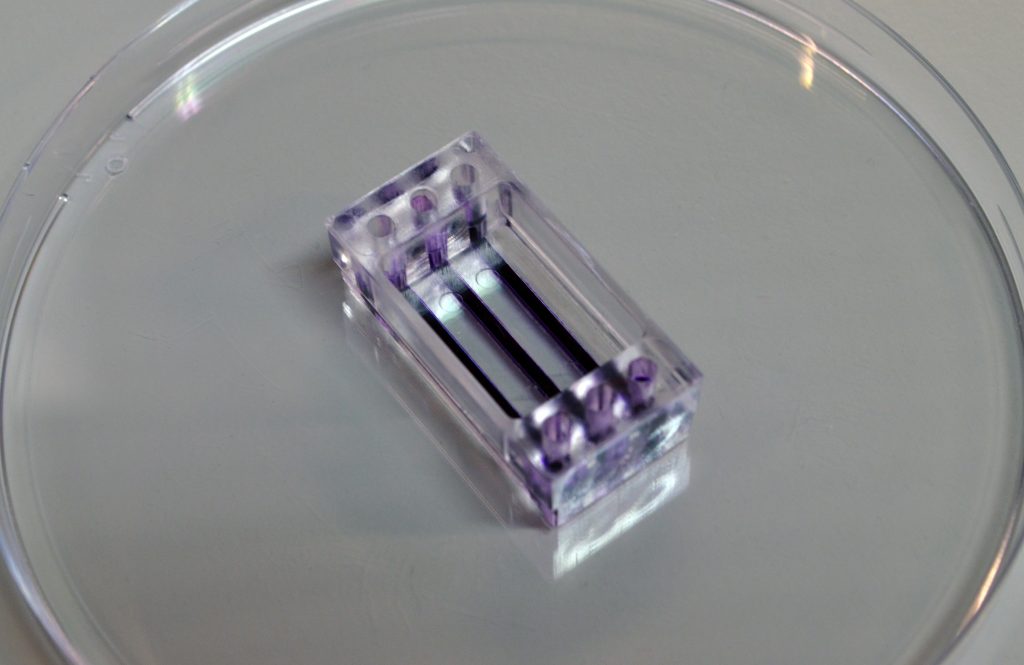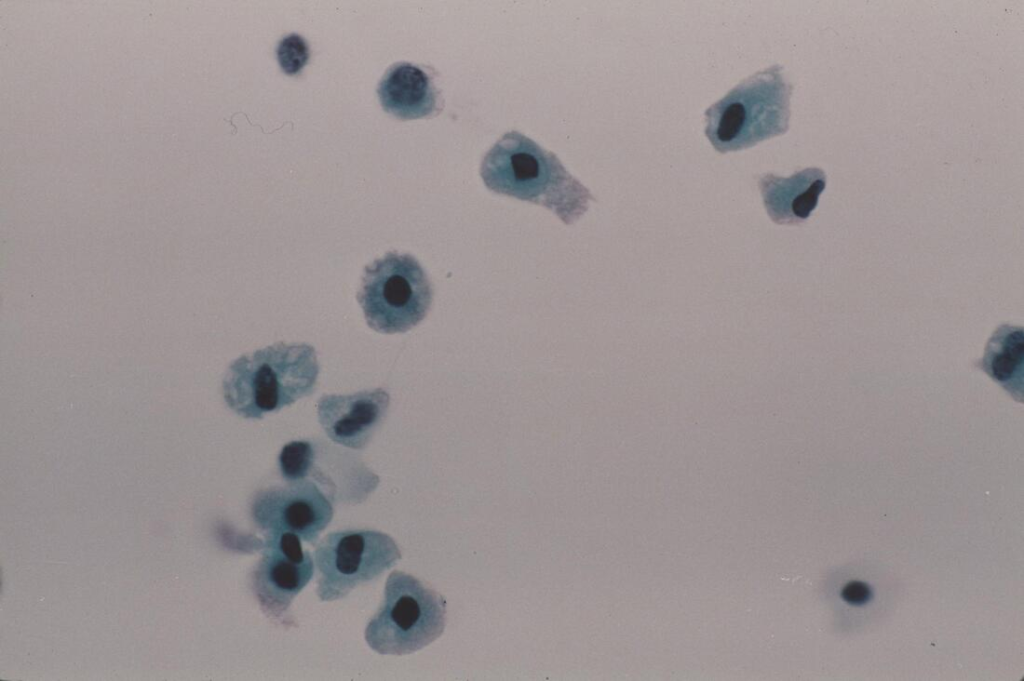| 产品名称 | BEOnChip,BE-TRANSFLOW,BE-DOUBLEFLOW STANDARD,BE-FLOW STANDARD,缺氧剪切共培养系统,Be-Gradient梯度培养室,BE-FLOW,细胞流体剪切应力?共培养装置,细胞流体剪切应力?共培养,流体剪切应力?共培养,细胞流体剪切?共培养,细胞黏附滚动芯片,气液界面培养芯片,内皮上皮屏障芯片 | |||||||||||||||||||||||||||||||||||||||||||||||||||||||||||||||||||||||||||||||||||||||||||||||||
| 品牌 | beonchip | |||||||||||||||||||||||||||||||||||||||||||||||||||||||||||||||||||||||||||||||||||||||||||||||||
| 产品货号 | BEOnChip,BE-TRANSFLOW,BE-DOUBLEFLOW STANDARD,BE-FLOW STANDARD,缺氧剪切共培养系统,Be-Gradient梯度培养室,BE-FLOW,细胞流体剪切应力?共培养装置,细胞流体剪切应力?共培养,流体剪切应力?共培养,细胞流体剪切?共培养,细胞黏附滚动芯片,气液界面培养芯片,内皮上皮屏障芯片 | |||||||||||||||||||||||||||||||||||||||||||||||||||||||||||||||||||||||||||||||||||||||||||||||||
| 产品价格 | 现货询价 | |||||||||||||||||||||||||||||||||||||||||||||||||||||||||||||||||||||||||||||||||||||||||||||||||
| 联系人 | 李先生 | |||||||||||||||||||||||||||||||||||||||||||||||||||||||||||||||||||||||||||||||||||||||||||||||||
| 联系电话 | 18618101725 | |||||||||||||||||||||||||||||||||||||||||||||||||||||||||||||||||||||||||||||||||||||||||||||||||
| 产品说明
BEOnChip起源于西班牙萨拉戈萨大学的一个研究小组,主要负责设计新的细胞培养设备,使细胞的环境尽可能的仿生。这项技术可以使药物测试将更接近现实,因此制造治疗癌症或心脏病等疾病的新药的时间和成本将会减少。 BEOnChip目前有四种细胞培养微流体设备:BE-GRADIENT,BE-FLOW,BE-TRANSFLOW 2通道,BE-TRANSFLOW 4通道。
产品一、Be-Gradient电化学梯度3D细胞培养微流芯片 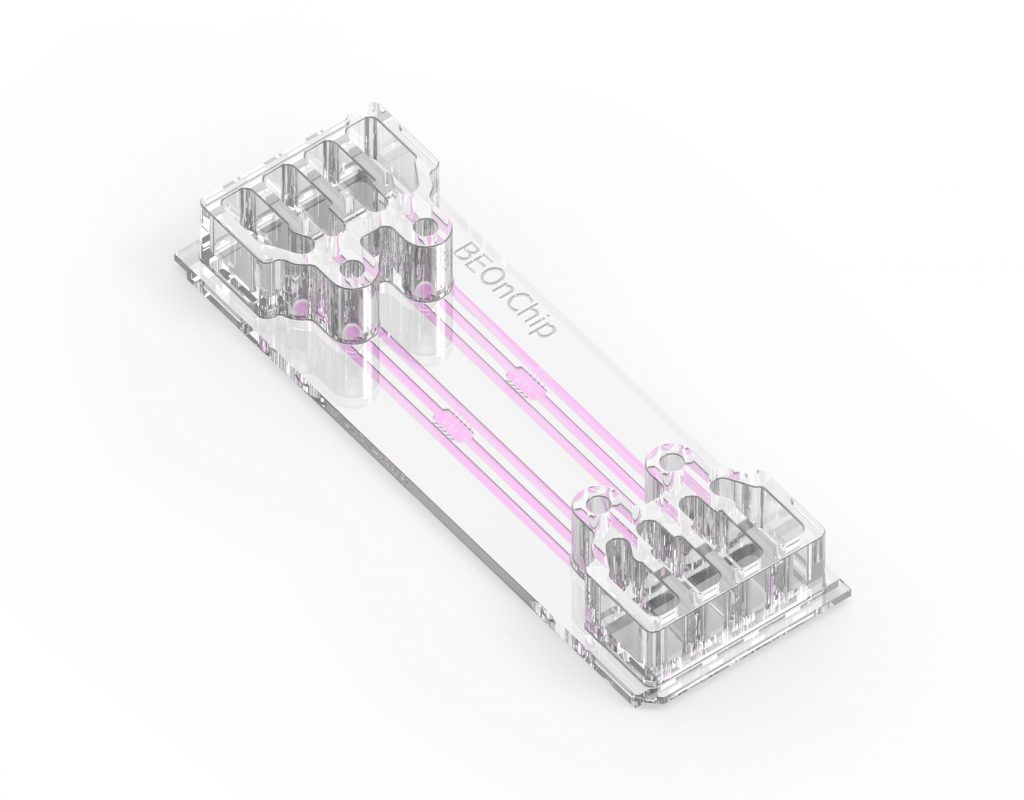 旨在将电化学梯度应用于3D细胞培养。 BE-Gradient与任何类型的光学显微镜兼容(反相,共聚焦,荧光..)。 Be-Gradient包含一个用于细胞培养的中央腔室和两个横向通道,两个横向通道通过3个小微通道连接到中央腔室。 横向通道旨在模拟血管。 二维培养不仅对于中央室而且对于侧向通道的贴壁细胞也是可能的。 1.1设备特性 易于使用:Be-Gradient与任何类型的光学显微镜(共聚焦,荧光…)兼容,并且已选择其载玻片格式,以便在显微镜下轻松处理。 易于实施:Be梯度室位于96孔板的标准位置,可用于自动显微镜。 易于连接:Be-Gradient与微流体流量控制系统(注射器,蠕动泵,压力控制系统,摇臂系统……)兼容。 wu非特异性吸收:与其他PDMS设备不同,Be-Gradientis由疏脂热塑性材料制成,不存在非特异性吸收问题。 因此,它可以进行免疫组织化学和荧光检测。
细胞回收选项:可以轻松回收Be–Gradient中使用的细胞培养物,以进行进一步的实验
产品结构: 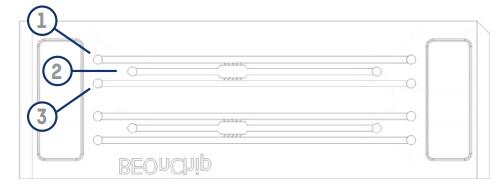
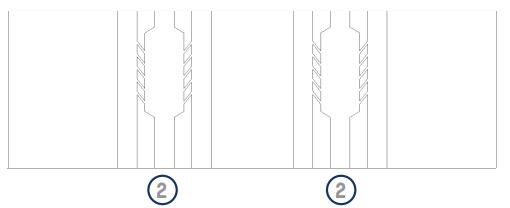 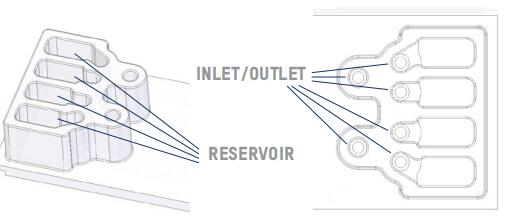
BE-FLOW细胞流体剪切应力共培养装置
BE-Flow是启动研究流量和机械应力对细胞培养物影响的里想设备。 一些常见的应用是机械剪切应力研究,3D培养物上的间隙流动,滚动和粘附或循环颗粒实验。 一种在仿生条件下进行细胞培养的通用微流体装置。它在体外模拟包括流动和剪切应力在内的生理环境。在流动条件下,在三个du立通道中进行长期的二维或三维实验。
2.1、设备功能 2.2、产品应用:与细胞粘附到血管内皮有关的过程(感染、细胞治疗、转移等)。 2.3、培养模式:
Perform 2D culture experiments under flow controlling the mechanical shear stress on the cells in two independent channels.
Be-Flow device allows 2D culture on all the walls of the device: top, bottom, … (see technical note). Co-culture with two different cell types monolayer is also possible
Investigate the effect of circulating particles such as circulating tumor cells, immune system cells, bacteria, fungi, viruses and many more in a 2D culture.
产品结构:
产品三、BE-TRANSFLOW 是我们功能多的细胞培养平台。 通过通过多孔膜将培养孔与微流体通道连接起来,可以研究复杂的培养结构。 这是用于气液界面(ALI)培养,内皮/上皮屏障和串扰研究的佳设备。 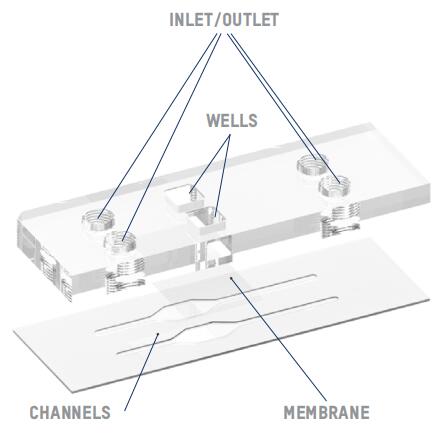 BE-TRANSFLOW是一种在仿生条件下进行细胞培养的通用微流体装置。它允许结合2D-3D有组织的共培养并有可能在上皮细胞上建立有或没有细胞的流动,可以在体外复制不同的组织结构。 3.1、产品特性:
易于使用:Be-Transflow与任何类型的光学显微镜兼容,并且已选择其载玻片格式,以便在显微镜下轻松处理。 3.2、产品应用:免疫系统体外模型、血管粥样硬化斑块形成、上皮粘连。
3.3、培养模式:
Perform Air Liquid Interface (ALI) experiments on a 2D or 3D culture with automatic culture medium replacement for systems such as epithelial cultures, toxicity tests, absorption test and much more.
Create the perfect endothelium endothelium-epithelium barrier: Use the upper well for the 2D or 3D epithelial culture and seed the endothelial cells in the perfusable channel underneath. Most common applications are Blood Brain Barrieer (BBB), gut, skin, lung and many more.
产品四、BE-TRANSFLOW 4通道 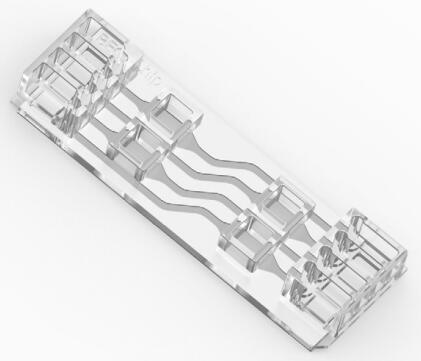 BE-TRANSFLOW是一种在仿生条件下进行细胞培养的通用微流体装置。它允许结合2D-3D有组织的共培养并有可能在上皮细胞上建立有或没有细胞的流动,可以在体外复制不同的组织结构。 产品应用:免疫系统体外模型、血管粥样硬化斑块形成、上皮粘连。 产品结构: 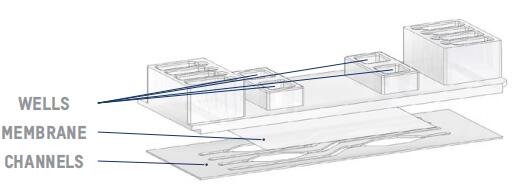 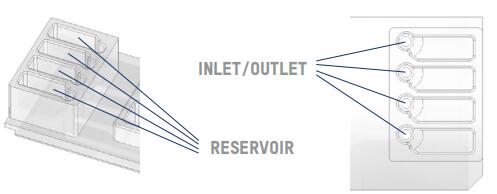
BE-DOUBLEFLOW STANDARD (10 devices per box) 5.1、培养模式Culture Models
Explore the crosstalk in the endothelium epithelium barrier under flow in both channels of the device, mimicking a more physiological environment for the study of different organs such as kidney, liver, gut or heart, among others.
Combine 3D and 2D cultures in a hypoxia environment where oxygen is supplied to the cells via the medium flowing in one of the channels.
Research the effect of circulating particles such as circulating tumor cells, immune system cells, bacteria, fungi, viruses and many more in a single cell culture, or in a complex coculture. Device features
ApplicationsBE-Doubleflow allows endothelium/epithelium barrier coculture where a hypoxia environment is needed or when flux plays a role also in the epithelium culture (Kidney, liver, heart, lung, gut…). In addition, its two perfusable channels offer a perfect environment for studying the effect of circulating particles (bacteria, immune response, circulating tumor cells). Example applications
Kidney on chip: The coculture of HPTC cells and vascular endothelial cells clearly improves performance of the HPTCs and increases the maintenance of the renal epithelia in vitro. Using BE-Doubleflow it is possible to coculture both type of cells simultaneously, circulating urine on the renal epithelium culture and blood like medium in the vascular culture.
| ||||||||||||||||||||||||||||||||||||||||||||||||||||||||||||||||||||||||||||||||||||||||||||||||||

